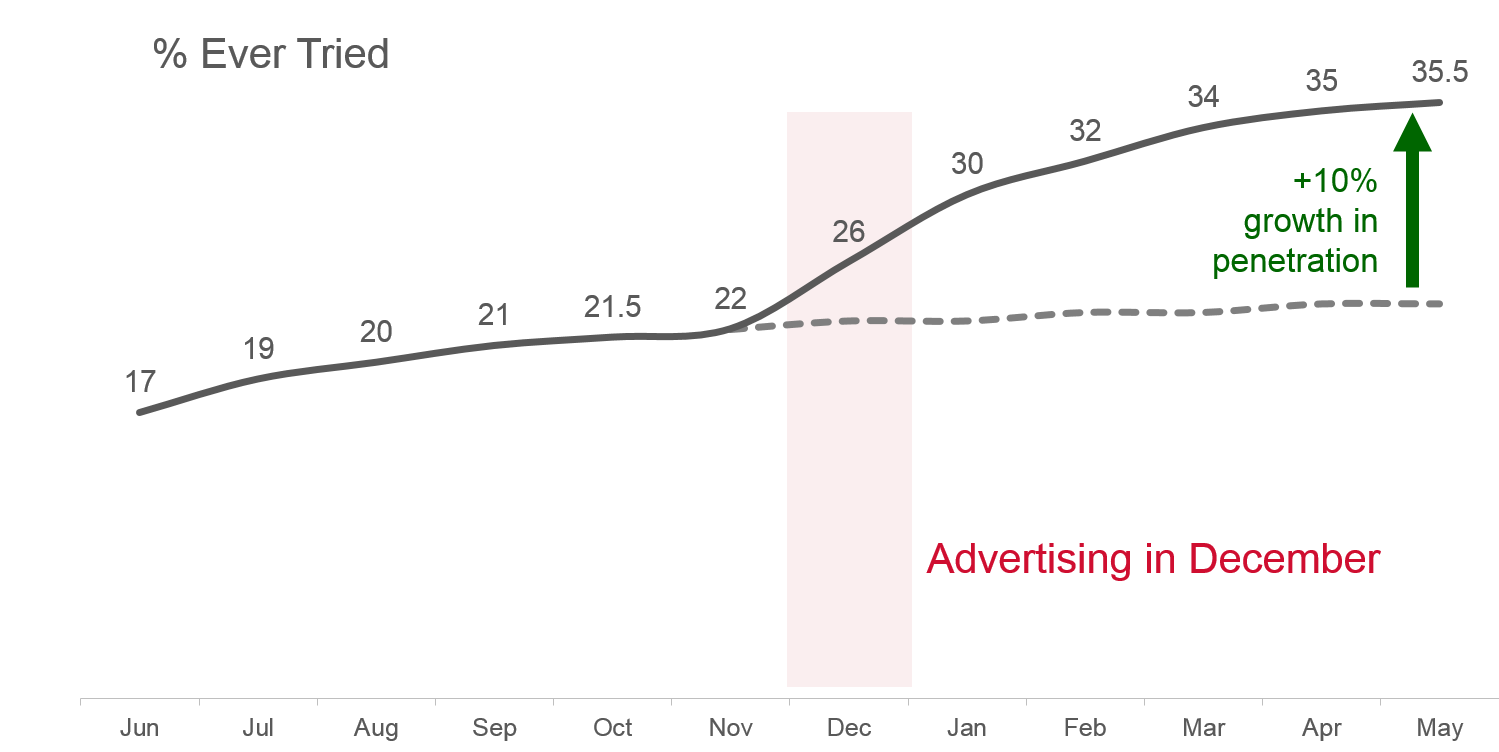A key advertising objective,
particularly for a new product, is to persuade consumers to try the brand.
Research solutions for pre-testing and post-testing advertisements accordingly
incorporate measures for the persuasiveness of advertising.
For online campaigns, which aim to drive ecommerce,
web analytics can provide hard measures such as conversion rates. These figures,
however, tend to be extremely low.
In this context, it is important to remember that
an ad’s impression influences a prospect in many different ways, and at different
times. Conventional research metrics based on pre/post disposition to purchase
the advertised brand often provide a better assessment of the persuasiveness
of an ad.
Market research companies like Ipsos ASI, use
controlled tests to gauge the persuasiveness of advertising.
Prior to watching the test ad, respondents are asked what brand they are likely to purchase
on their next purchase occasion. Post exposure, respondents are asked what
brand they would prefer to win. Asking for the respondent’s preference in a
different context helps to mask the purpose of the question. This lessens the
possible bias that could arise if respondents knew the intent of the question.
An alternative approach is to use two groups — a
test group exposed to the ad and a control group not exposed to the ad. This
approach which eliminates bias, requires two well-matched sample groups, and is
therefore more expensive.
The persuasion score is
the shift between the purchase intent and purchase frequency after seeing the
test ad and before being exposed to it, or the difference between the test and
the control groups. Ipsos ASI computes a benchmark expected persuasion score
called Predicted Average Result (PAR) Shift based on market, brand
strength, category loyalty and market fragmentation. A persuasion index
is computed based on persuasion score divided by the PAR shift.
In copy testing, for advertisement effectiveness,
Ipsos ASI computes the copy effect index (CEI) as a combination of reach
and persuasion.
$$ CEI = Reach × Persuasion\; Index $$
In a post-testing scenario, in addition to pre/post
disposition to purchase, measures of sales response may also be used to gauge
the impact of the advertisement in generating short term sales. This is not
straightforward because the impact of advertising on sales is usually drowned
by causal influences such as in-store promotions. Market response modelling,
which is covered in chapter Marketing mix Modelling can help decompose
the impact of each of the individual elements, and is particularly useful in
assessing short term influences of advertising.

Exhibit 13.8 Consumer panel data reveals a large improvement
in trial as this brand attracts new and lapsed buyers. This improvement in
the brand’s penetration is due to the advertising campaign during December,
as well as other marketing efforts.
Disaggregate level consumer panel data is quite revealing, in
that it can separate trial from repeat purchase. The chart in Exhibit 13.8 reveals a 10% point lift in trial of a
brand due to the impact of an ad campaign in December, as well as other
marketing activities. This is a good measure for the persuasiveness of the
overall marketing effort in attracting new consumers. However, unless we
decompose the impact of each of the marketing elements, we cannot deduce how
much of this impact is due to advertising alone.